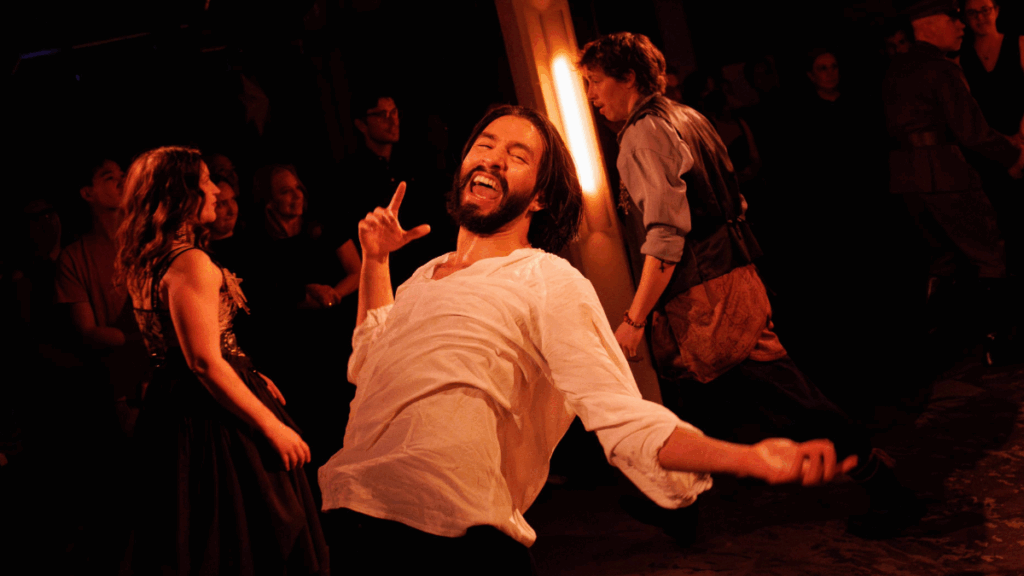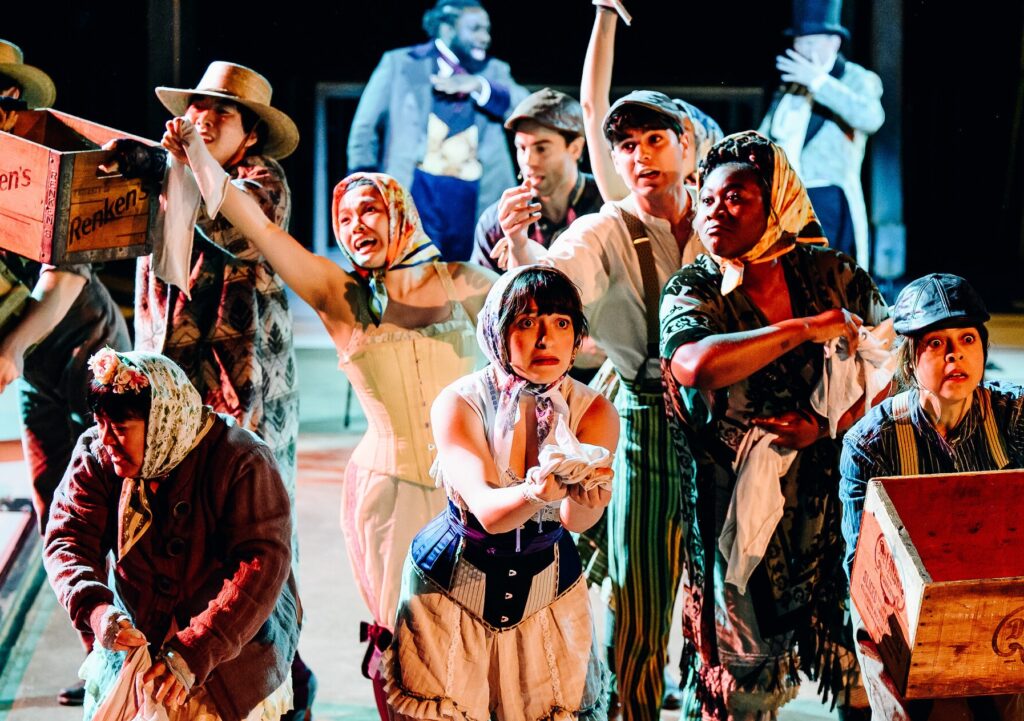VIEWPOINTS – Join the uprising: Revolutionary vibes fuel the immersive DEATH OF RASPUTIN and the freewheeling COUNTERFEIT OPERA
- By drediman
- June 17, 2025
- No Comments
Now with the 2024/2025 Broadway season firmly behind us, the focus has officially turned to this year’s crop of early summer theater offerings. Two productions in particular have captured the imagination of theatergoers with their revolutionary vibes. As always, read on for my thoughts.

THE DEATH OF RASPUTIN
The Arts Center at Governors Island
Through June 28
Given the recent closing of both the legendary Sleep No More and relative newcomer Life and Trust, New York has been left without a flagship immersive theater magnet. Enter The Death of Rasputin (RECOMMENDED), which in recent months has slowly built momentum over at Governors Island, where the production has taken over essentially the entirety of the island’s two-story Arts Center building, complete with a bar for libations prior to and after the experience (later on this month, the New York premiere of Punchdrunk’s Viola’s Room is also likely to make an impact). Created by some of the original cast members of Sleep No More, The Death of Rasputin throws audiences into the throes of the Bolshevik Revolution of 1917, wherein they’ll take on the role of participants in the uprising against the imperial house of the Romanovs. Although it may not be mounted on the same scale and budget as the aforementioned shuttered experiences, the piece benefits from focus, accessibility, and the incorporation of dialogue into the proceedings. The scrappier aesthetic also fits well with the revolutionary sensibility of it all (audiences are encouraged to wear black to show solidarity with the revolutionary movement). The result is clearer, leaner storytelling that efficiently rips through 90 efficiently plotted minutes. That being said, the emphasis on espionage — spoiler alert, you’ll likely find yourself plotting to raid of the Romanov’s palace — comes at the consequence of some of the poetic, hallucinatory imagery that made shows like Sleep No More so intoxicating. However, The Death of Rasputin is not devoid of the kind of movement-driven storytelling that has marked many an immersive experience. Indeed, a hedonistic dance with Rasputin, a drunken jig at the bar, an aristocratic ballroom scene all prominently feature dance as an integral means of storytelling.
THE COUNTERFEIT OPERA
The Amph at Little Island
Closed
I further caught the revolutionary bug at Little Island’s first major production of its packed summer season at the Amph. That would be The Counterfeit Opera (RECOMMENDED), Kate Tarker and Dan Schlosberg’s new version of John Gay’s The Beggar’s Opera, the work that famously inspired Bertolt Brecht and Kurt Weill’s The Threepenny Opera. The central meta-theatrical conceit of the production is that it is being put on by present-day New York criminals as a means of expressing their frustrations about the cost of living in the city and the corruption of those in power (sadly, not much has changed). More specifically, the rowdy bunch appropriately shifts the story from Victorian London to 1850s Manhattan — the neighborhood being Five Points (also the setting of the ill-fated musical Paradise Square), a grimy melting pot notoriously populated by criminals, whores, and other unsavory characters. Tarker and Schlosberg — the team behind last summer’s Little Island production of the hyperactive solo version of Mozart’s The Marriage of Figaro with countertenor star Anthony Roth Costanzo — have come up with a show that firmly pays homage to both the Beggar’s and Threepenny iterations of the piece. Tarker’s book and lyrics take their primary cues from Gay’s work — although the satiric edge of the update doesn’t quite slice as deeply nor as incisively as the original(s) — while Schlosberg‘s eclectic score (cabaret, jazz, punk, and more are represented) is more in the commentary mold of Weill’s immortal songs, at least in spirit. Allegedly, rehearsal time was limited for The Counterfeit Opera, which may explain the messy and haphazard manner in which the production unfolded; kudos to director Dustin Wills, who has somehow managed to shape a cohesive staging. Although this may have frustrated some theatergoers, in my mind, the aesthetic was completely in line with the work’s overarching concept. This freewheeling, “anything goes” quality was also embraced by the more than game cast (featuring the likes of Broadway’s Damon Daunno, Lauren Patten, and Ann Harada).


 Copyright © 2025
Copyright © 2025
Leave a Reply